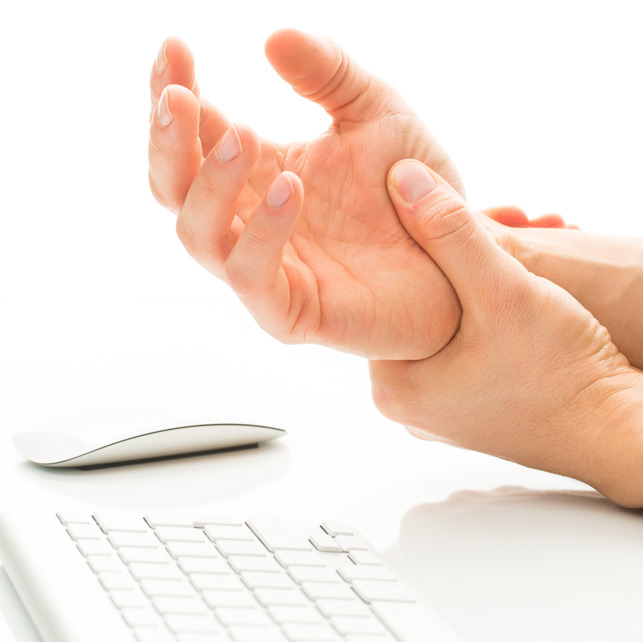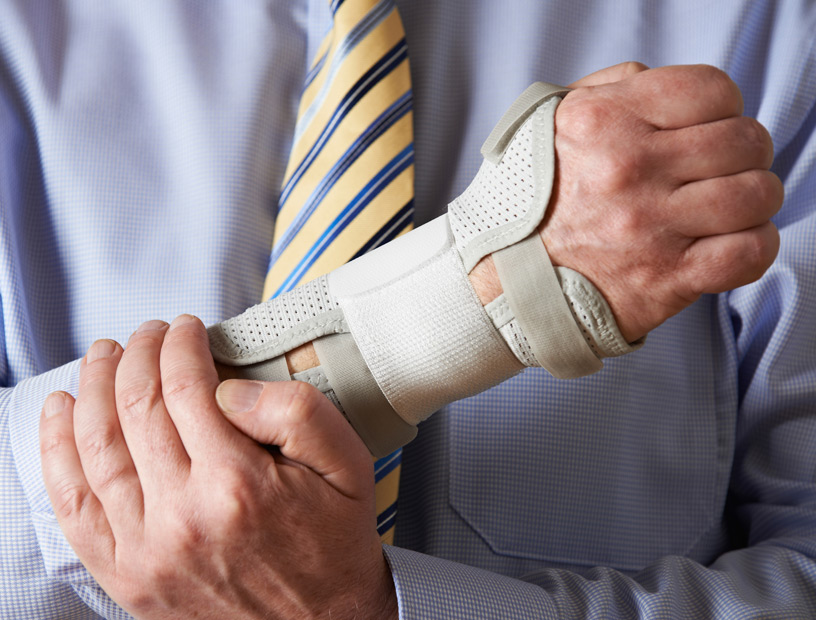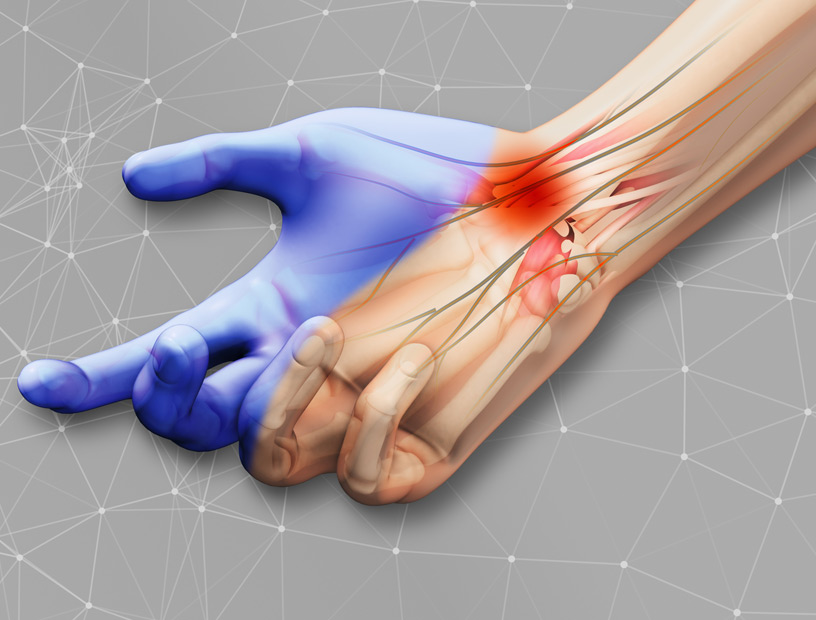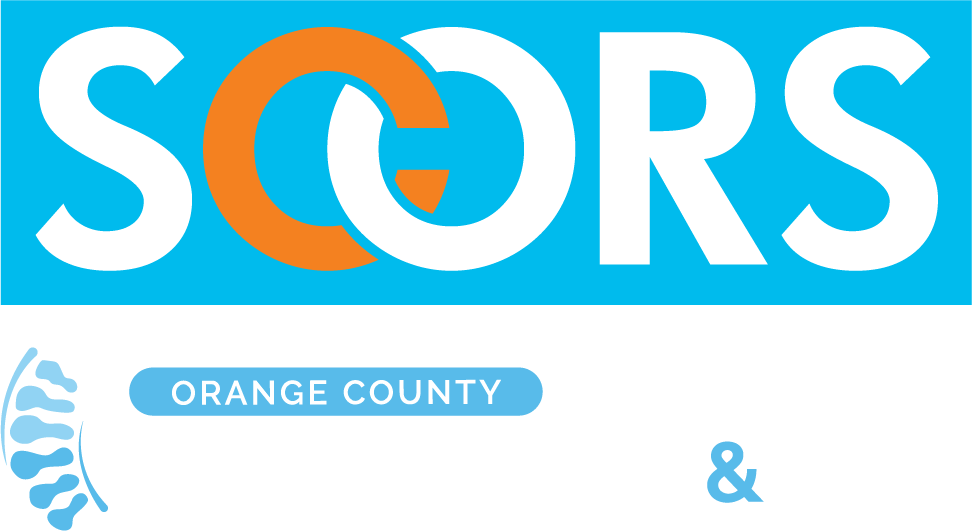
Learn more about what contributes to the development of carpal tunnel syndrome.
Carpal tunnel syndrome is a disorder of the hand and arm that results in debilitating numbness, tingling, and difficulty with movement. It results from a pinched nerve in the wrist, which in turn can be caused by a variety of conditions. There are many factors related to the development of carpal tunnel syndrome, including:
- Your particular hand and wrist anatomy
- Your overall health
- How often you perform certain motions with your hands
The carpal tunnel is just a thin passageway located on the palmar side of your wrist. This tunnel is where the main hand nerve and nine tendons to your fingers are housed. When that nerve is compressed, you will begin to experience symptoms. For most people, prompt and thorough orthopedic treatment can relieve the symptoms and restore full functionality to the wrist, hands, and fingers.
Causes
Carpal tunnel syndrome is caused by compression of the median nerve. The nerve might be compressed by trauma such as a fractured wrist. Rheumatoid arthritis can also cause inflammation that compresses the nerve. Pregnant women may experience carpal tunnel due to increased blood volume and swelling during pregnancy, with a resolution after delivery. Repetitive motions from typing, sewing, or other intensive activities can cause inflammation of the nerve passage. In some patients, no cause of the nerve compression is recognized.
Symptoms

The symptoms of carpal tunnel syndrome have a gradual onset. You may notice an occasional numbness or tingling in your thumb, pointer, and middle finger that waxes and wanes. The numbness is often accompanied by discomfort within your wrist and hand. Over time, the numbness and tingling may also develop in your ring finger. The symptoms rarely occur in the little finger due to its nerve structure.
The feelings of numbness happen most often when you are using your hand for a long time, such as when holding the steering wheel, reading a paper, using your smartphone, or doing hand work hobbies such as knitting. The symptoms can even wake you up at night. As the severity increases, the numbness can extend from your wrist up through your arm to the elbow.
Continued compression of the nerve increases the frequency and duration of your symptoms. Over time, your hand weakens so that you could drop objects. Your thumb may not have a good grasp because it is directly controlled by the compressed median nerve. If left untreated, you could have permanent nerve and muscle damage in your wrists, hand, and fingers.
Treatments
In the earliest stage of carpal tunnel syndrome, taking breaks and resting your hands and wrists may help. When the numbness and tingling continue or worsen, non-surgical treatments such as wearing wrist splints at night can help to relieve the swelling and pressure. Your doctor may also prescribe non-steroidal anti-inflammatory drugs to control swelling and inflammation. Surgical care such as endoscopic surgery to cut and loosen the carpal tunnel ligament offers permanent relief. This surgery offers a rapid recovery and you can use your hand right away.

on caring for specific orthopedic needs.

